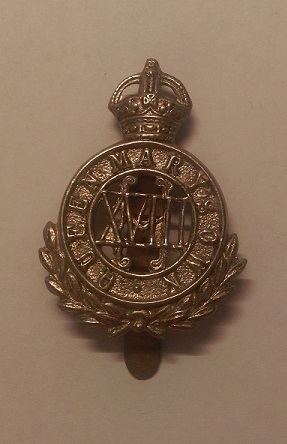Active 1759–18211858–1922 Type Cavalry Size 1 Regiment | Role Line Cavalry | |
 | ||
Country Kingdom of Great Britain (1759–1800) United Kingdom (1801–1922) | ||
The 18th Royal Hussars (Queen Mary's Own) was a cavalry regiment of the British Army, first formed in 1759. It saw service for two centuries, including the First World War before being amalgamated with the 13th Hussars to form the 13th/18th Royal Hussars in 1922.
Contents
Early history
The regiment was first raised by Charles, Marquess of Drogheda as the 19th Regiment of (Light) Dragoons in 1759; it was also known as Drogheda's Light Horse. It was renumbered the 18th Regiment of (Light) Dragoons in 1763, and briefly the 4th Regiment of Light Dragoons in 1766 before reverting to the 18th in 1769. Arthur Wesley was briefly a junior officer in the regiment between October 1792 and April 1793. The regiment undertook a one-year tour in Saint-Domingue between February 1796 and February 1797. It was in action at the Battle of Bergen in September 1799 during the Anglo-Russian invasion of Holland.
In 1805 it took the title of the 18th (King's Irish) Regiment of (Light) Dragoons, named for George III, and redesignated as hussars in 1807, becoming the 18th (King's Irish) Regiment of (Light) Dragoons (Hussars). The regiment landed at Lisbon in July 1808 for service in the Peninsular War. It fought at the Battle of Sahagún in December 1808, at the Battle of Benavente later in December 1808 and at the Battle of Cacabelos in January 1809 before taking part in the Battle of Corunna and the subsequent return to England later that month.
The regiment was ordered to support Sir Arthur Wellesley's Army on the Iberian Peninsula and landed at Lisbon in February 1813. It saw action at the Battle of Morales in June 1813, the Siege of Burgos in September 1812 and the Battle of Vitoria in June 1813. It went on to fight at the Battle of Sorauren in July 1813 and, having advanced into France, at the Battle of the Nive in December 1813, at the Battle of Orthez in February 1814 and at the Battle of Toulouse in April 1814. It returned home in July 1814.
The regiment took part in the Hundred Days landing at Ostend in April 1815. It charged the centre of the French position at the Battle of Waterloo in June 1815. It then remained in France as part of the Army of Occupation brigaded with the 12th Royal Lancers under the overall command of Major-General Sir Hussey Vivian. It was disbanded in Ireland in 1821.
Re-formed
The regiment was reformed in Leeds in 1858, as the 18th Regiment of (Light) Dragoons from a nucleus taken from the 15th Hussars, and was renamed the 18th Hussars in 1861. The regiment was to deployed to South Africa in 1899 for service in the Second Boer War and saw action during the Siege of Ladysmith later that year. In 1903 it was named the 18th (Princess of Wales's Own) Hussars, for Princess Mary, being retitled the 18th (Victoria Mary, Princess of Wales's Own) Hussars in 1905 and the 18th (Queen Mary's Own) Hussars in 1910 to mark her coronation as Queen Consort.
The regiment, having been based at Tidworth Camp at the start of the First World War, landed at Boulogne-sur-Mer as part of the 2nd Cavalry Brigade in the 1st Cavalry Division in August 1914 for service on the Western Front. The regiment was retitled as the 18th (Queen Mary's Own) Royal Hussars in 1919 and then as the 18th Royal Hussars (Queen Mary's Own) in 1921. It amalgamated with the 13th Hussars to form the 13th/18th Royal Hussars in 1922.
Colonels
Colonels of the regiment were:
Commanding officers
The commanding officers of the regiment included:
Battle honours
The regiment’s battle honours were as follows:
